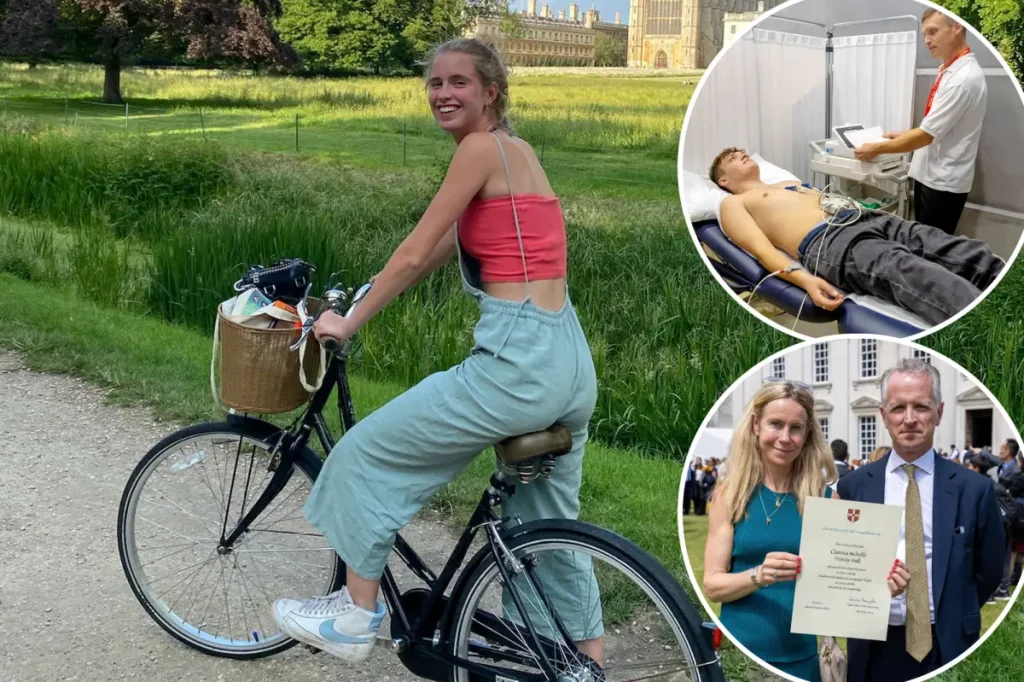Tragedy Sparks Life-Saving Campaign for Young Hearts
A serene hiking trip in southern France turned into an unimaginable tragedy when 20-year-old University of Cambridge student Clarissa Nicholls suddenly collapsed and died without warning. Her devastated family later discovered she had arrhythmogenic cardiomyopathy (ACM), a rare heart condition where heart muscle is gradually replaced by scar tissue and fat, leading to her fatal cardiac arrest. What made this loss particularly shocking was that Clarissa showed no symptoms whatsoever before her death. Her mother described her as “supremely active, one of the fittest and healthiest and energetic girls you would have ever met,” making her sudden passing incomprehensible to everyone who knew her. The most heartbreaking aspect of this story is that with routine heart screenings, this vibrant young life might have been saved. ACM, like many cardiac conditions, can remain invisible until it claims a life, and tragically, strenuous exercise can sometimes exacerbate these undetected heart issues.
From this profound loss emerged a powerful mission as Clarissa’s family, together with her friends Izzy Winter and Jess Reeve, established “Clarissa’s Campaign” to prevent similar tragedies among young people. Their initiative took on special urgency upon learning that one in every 250 people may be affected by such cardiac conditions yet remain completely unaware of the danger. The campaign raised over £100,000 (approximately $133,000) to fund heart screenings for Cambridge students, partnering with the charity CRY (Cardiac Risk in the Young) to provide these potentially life-saving tests. The response has been remarkable—more than 400 students have already undergone screening, with 42 referred for additional testing. These numbers represent not just statistics but potentially dozens of lives saved from experiencing the same fate as Clarissa. Her mother expressed gratitude for Cambridge University’s support, noting, “Cambridge has been brilliant in supporting this and I believe there is the will to keep the momentum going.”
What makes Clarissa’s story especially important is how it highlights a concerning trend in cardiovascular health among young people. Research indicates that for most individuals, heart health begins declining around age 17—much earlier than many might expect. This reality is confirmed by healthcare professionals like Dr. Jewel Scott, a primary care nurse practitioner, who regularly treats patients in their early twenties already developing serious cardiovascular risk factors such as elevated blood pressure, high blood sugar, and obesity. The common assumption that heart problems primarily affect older adults misleads many young people into a false sense of security regarding their cardiac health. In reality, the foundations for heart disease can be laid decades before symptoms appear, with lifestyle choices made during adolescence and early adulthood having profound effects on future cardiovascular wellbeing.
The deterioration of heart health often begins in childhood, despite most children being born with healthy cardiovascular systems. Dr. David Jacobs, a public health professor at the University of Minnesota, highlights this alarming trend, noting that “currently less than 5% of US children enjoy ideal cardiovascular health.” This statistic reveals how quickly the natural advantage of youthful heart health can be eroded by modern lifestyle factors. The growing prevalence of sedentary activities, processed food consumption, and early exposure to substances like nicotine through vaping has accelerated heart health decline in younger generations. What makes conditions like ACM particularly dangerous is that they can remain completely asymptomatic while worsening, especially when combined with intense physical activity that would otherwise be considered healthy for young people.
Clarissa’s Campaign represents more than just a memorial effort—it demonstrates how tragedy can transform into life-saving action. By focusing on preventative screening, the initiative addresses a critical gap in healthcare for young adults who typically wouldn’t consider heart checks necessary. The campaign’s success in identifying 42 students requiring further cardiac evaluation proves how essential these screenings are, potentially preventing dozens of similar tragedies. For many young people, university represents a time of independence, including making personal health decisions without parental oversight. This transition period creates a vulnerability where routine preventative care may be neglected, making campus-based screening programs like Clarissa’s Campaign particularly valuable. The university setting also provides an opportunity to educate young adults about cardiovascular health at a time when they’re establishing lifelong health habits.
The ripple effects of Clarissa Nicholls’ story extend beyond Cambridge, highlighting the universal need for greater awareness of cardiac health among young people worldwide. While lifestyle factors like lack of exercise, poor diet, nicotine use, and excessive alcohol consumption contribute significantly to declining heart health, even apparently healthy and active young people may harbor undetected cardiac conditions. This reality underscores the importance of routine screening as part of comprehensive healthcare for young adults—not just those with obvious risk factors. As Clarissa’s Campaign continues to save lives at Cambridge, it also serves as a powerful model for other educational institutions and communities to implement similar screening programs. Though nothing can bring back the vibrant young woman who lost her life on that hiking trail in France, her legacy lives on through each student who receives a screening and each life that might be saved through early detection. In this way, a devastating personal tragedy has transformed into a far-reaching mission of prevention, awareness, and hope.













